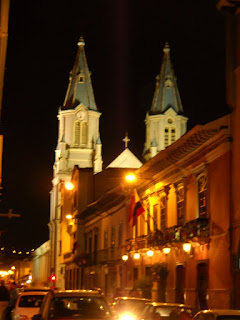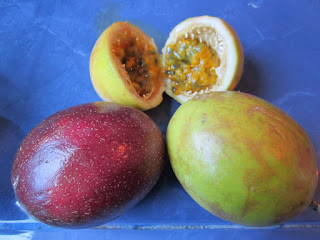2 hours, 12 minutes, and 51 seconds later I crossed the finish line, having fought and won the mental battle to force one leg to lift and then the other, placing one foot in front of the other. Since "not walking" is some sort of bragging right for runners (not sure why!), I'll mention that the only walking I did was at hydration stations, and walking at those points is actually recommended by some top runners.
In addition to receiving some cool gear, I come away from the race with a renewed appreciation for the importance of hard work and training. The course route is unique in that it's set up as a double out-and-back. As I was running out toward the 5k turn-around, I could see the top runners coming back to finish the first 10k of the race, and as I was around kilometer 11, I watched the soon-to-be-winner coming down the home stretch. Observing those top Ecuadorian runners, I was impressed by their extreme focus and the extent of their training. Someone doesn't win a road race by accident. It comes through hour after hour of grueling physical and mental training. Applying that to the spiritual life, the Apostle Paul said,
Do you not know that in a race all the runner run, but only one gets the prize? Run in such a way as to get the prize. Everyone who competes in the games goes into strict training. They do it to gain a crown that will not last; but we do it to get a crown that will last forever. Therefore I do not run like someone running aimlessly; I do not fight like a boxer beating the air. No, I strike a blow to my body and make it my slave so that after I have preached to others, I myself will not be disqualified for the prize. ~I Corinthians 9: 24-27





























































